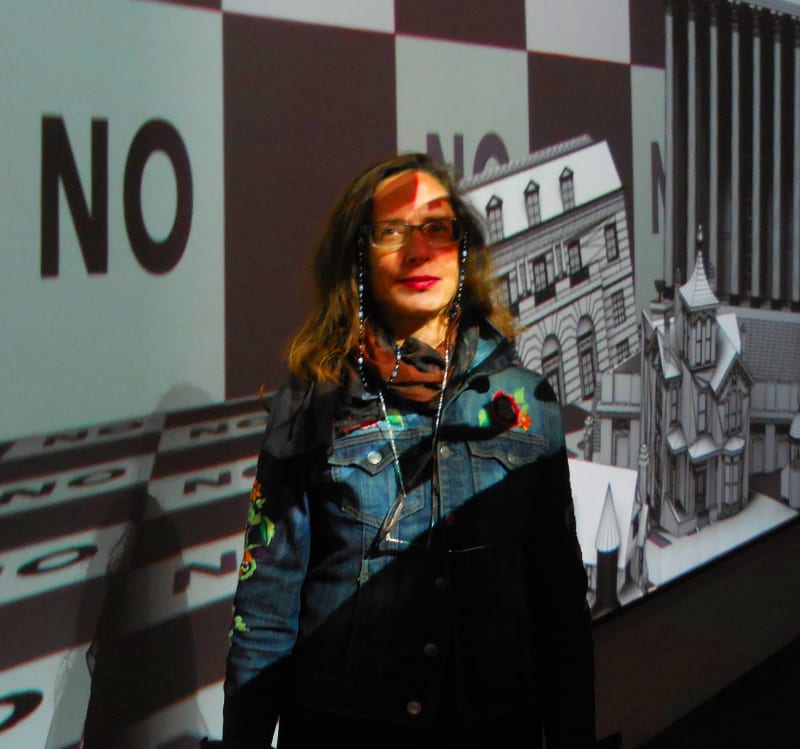CLAUDIA HART
Claudia Hart emerged as part of that generation of 90s intermedia artists in the “identity art” niche, but now updated through the scrim of technology. Her work is about issues of the body, perception, nature collapsing into technology and then back again. Everything is fluid in it including gender. She considers it Cyborg-ish, creating liminal spaces, and is in love with the interface between real and unreal because it is space of contemplation and transformation.
Hart was very early into virtual imaging, using 3D animation to make media installations and projections, then later as they were invented, other forms of VR, AR, and objects using computer- driven production machines, all adapted from the same computer models. She is considered a pioneer in this, taking a feminist position in a world without women when she started 20 years ago, inspired by the French media artists of the 60s.
Hart produces real things, not just mediated ones, meaning “mediated objects” (digitally enabled sculptures, drawings, paintings, wallpaper, conceptual crafts), and projections on painted walls, and ultimately on human bodies wearing sculptural screens of some sort. She produces bodies of work shown in galleries that then inspire performances that, for the past five years, have been shown in the experimental theater and performance context.
Hart’s work is symbolist and poetic, not really narrative, but vaguely so, and is mesmerizing, hypnotic and formalist. Bodies or natural forms like flowers always appear in it. Hart calls her work, “post photography,” and has created a body of theoretic writings and exhibitions based on this concept The things in her worlds are generated from computer models instead of captured with a camera. At SAIC, she developed a pedagogic program based on this concept. It is called Experimental 3D, and is the first art-school curriculum teaching simulations technologies in the art world.

